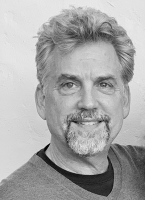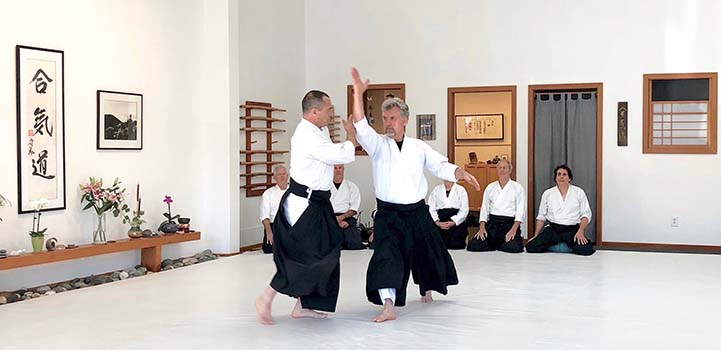In the previous season of arcCA DIGEST, we republished (from arcCA 10.4) “In Praise of Fallow Fields,” by architect Kurt Lavenson, a reflection on the hidden value of those times when business is slow. Here, Lavenson offers a similarly unexpected meditation on the conflicts of practice.
When I tell people I’m an architect, it’s not unusual for them to say they wanted to be one, too. There is something appealing about the person, or the idealized image of the person, who bridges the worlds of art and business. Or perhaps the appeal is in the fantasy of having the power to shape the environment and people’s activities within it — to easily conquer obstacles, like in an episode of an HGTV series. In my experience, some of that fantasy comes true, but it is tempered by quite a dose of responsibility, compromise, and conflict. I sometimes reflect upon my choice to follow this path. Has it been healthy for me? Has it been good for my clients, the community, the environment?
It’s often simpler to zoom out and address the latter. I have created some very nice homes, where people raise their families, do their work, house their collections, and host their friends. On the whole, my clients have been quite happy and grateful. They discover through time that I planned their homes around the rhythm of their lives and the features of their site, or that I anticipated their needs before they realized they had them. When I have the opportunity, I try to do the same for the neighbors. As a sole practitioner, I don’t get many chances to work at the urban scale, but occasionally I brush up against it with my work, making moves that energize both my project and the environment next door or across the street. I play my part in the weaving of the community fabric. It’s a social, almost political, connection, and it feels constructive. Like many architects, I treat the privilege of building with thought and care for those I will affect, not just my clients. Design matters, and we have a tremendous opportunity to affect the environment, not just through healthy material choices and energy strategies, but also through spatial composition, respect for existing norms, and creative disruption of those norms. This part of the job seems rather healthy.
When it comes time to zoom in and evaluate the more personal side of being an architect, things get a little murkier. At first blush, it’s a great job: a career spent solving problems, delighting people, creating solutions, and discovering pathways through the maze. It can also lead to public recognition and acclaim. But it’s trickier than that. Somewhere along the way, especially if you own your business, designing the perfect space or building or detail falls under the shadow of worries about liability, cost, and unexpected consequences. “Will this be awesome?” gets edged out by “Will I get paid?” or “Will this leak?” Engineers worry about collapse. Architects worry about water, or the effects of water. At a continuing education seminar I attended years ago, the presenter stepped up to the white board and said, “Remember this formula…” then wrote: Water + Buildings + Lawyers = Lawsuits. I think the presenter worked for an insurance company, which means they were operating under a different formula: Fear + Architects = Higher Premiums. I got the education units, but I was scarred for life. And I upped my coverage limits. I do not remember chattering excitedly about insurance at 2:00 a.m. in the university design studio. So perhaps this underlying anxiety is an unhealthy consequence of business.
When fear of liability—or budgets, or criticism, or disappointment—becomes the primary driver of our actions, we are on the wrong course. But a little bit of fear keeps us sharp and on our toes. Professional responsibility and diligence are real, but the key is balance. I think health requires a sense of security and stability. When we undercut that, we lean toward the unhealthy. It might be exciting for a while, but it’s corrosive. I recently heard a 1970s era remark from the film director and screenwriter John Cassavetes. He said, “If you’re an artist, you’re not really interested in success per se.” I don’t think the starving artist model is healthy for us. It’s too much about scarcity, vulnerability, and a childlike hope that someone will observe our talent and reward us. Architects do travel between the worlds of the artist and the professional, but if we are not looking out for ourselves, embracing our success and freedom, how can we do our best work for others? It’s not enough to make a cool building or check LEED points off a list if we are still left worrying all the time. I am reminded of the safety instructions when you board an airplane: “Put on your own oxygen mask first, then help others.”
I found an unexpected solution to dealing with my professional vulnerability and taking better care of myself. I practice Aikido, a Japanese martial art that is focused on compassionate self-defense. We do not attack, and we do not seek to harm others. We also do not allow them to harm us. Ideally, we do not even allow aggressors to harm themselves; we seek to make them our allies. My teacher, Tom Gambell, has been practicing and living this way for 45 years. He emphasizes the difference between struggling and suffering. We are built to struggle, to grapple with problems. We gain strength and wisdom through that process. It’s how humans are wired. It’s easy, however, to confuse struggle with suffering. Gambell likes to paraphrase a Buddhist saying: “Be sure your suffering is appropriate.” Suffering is often voluntary and interferes with autonomy and freedom. It saps your energy and your hope. It closes your heart, narrows your options, and creates panic. It creates adversaries and leads to attacks. Struggling, however, hones skills, adds tools and techniques to your repertoire, and increases options. Ultimately, when you have more options, you feel a sense of spaciousness and generosity, toward yourself and others. You can keep your heart open in times of conflict. You can struggle with the next problem and enjoy it.
People make assumptions about “gaining confidence” from a martial arts practice, but most of those are predicated on practices that seek to vanquish an opponent or dominate them. That is actually not a useful model in architecture—or in life—at least in the long term. Real life does not work like the movies, in which one person wins and it’s over. Real life continues. If you treat someone badly, there is a pretty good chance they or someone near them will treat you badly at the next opportunity. There is usually blowback. In the business of architecture, we all know examples of harsh bidding processes that lead later to big change orders or to construction shortcuts. In Aikido, we practice with partners, and we take turns. I throw you four times, then you throw me four times. When it’s my turn, I am mindful that it will soon be your turn. I demonstrate how I believe power should be used. We both fall down. We both get up. Similarly, as an architect I control the process at the beginning, but the contractor will control it next. And through it all, the owner may try aggressively to take control if they feel mistreated. When somebody stumbles on a project of mine, I help them get up and regain their professional or emotional balance. They don’t forget that. When I stumble, which is inevitable, guess what usually happens.
I now negotiate more effectively with clients, without either of us feeling shortchanged. I take better care of myself in my contracts and legal arrangements. I handle design and construction challenges more fluidly. We all know that construction is rife with conflicts, problems, and attacks. I treat these things as friendly struggles and as a kind of martial therapy, to ease each party’s sense of vulnerability and create a sense of connection. That can mean self-effacing humor, asking the contractor for improvements to the strategy, or convincing a planning department that a design is consistent with the neighborhood even though it’s a big change. When possible, I align the owner, contractor, planner, etc. and myself against “the problem,” so that the struggle strengthens the team rather than breaking it apart into competing factions.
In addition to grappling, Aikido emphasizes position and harmony. If an attack is coming your way, move and seek your balance nearby. We call it “getting off the line” (of attack). During that moment, as you create more space for yourself, you observe the situation, so you can respond rather than react. Can you realign yourself or the other person, to change the outcome? I was reminded how practical and effective this can be when I was negotiating with an angry client who owed me quite a bit of money. He believed I had not done enough work in relation to the fees. He felt shortchanged. I phoned him to resolve it, and he was intransigent. He said he had nothing more to say to me, so why did I call? He may have been offering more of a wall than an attack, but since I needed the money it felt like a serious taking, which is basically an attack. Instead of calling my lawyer, however, or going at him with threats about our contract or what he owed me, which would have been counterattacking, I suggested that maybe we could just talk about how angry he was that he had paid me so much money and all he had was a bunch of “cartoons.” I chose that word deliberately. There was a pause. Then, “You’re damn right I am,” followed by a pretty harsh list of accusations that I was able to hear as his suffering rather than my failure. Essentially, I encouraged him to attack, to vent, to take a few swings at me; I stayed out of the way, but engaged. Eventually, the conversation changed. He ran out of accusations and asked me what I thought. The wall was down. The alignment had shifted. I reminded him of particular conversations we had, and his requested changes, and our agreement. My work was well within my promises, just not within his assumptions, especially after his anger fogged his memory. Now he was able to see that. There was some harmony, not a lot, but enough. He looked at things from my perspective, because when it was my turn I had described them from his. I acknowledged his pain without getting defensive, and that turned out to be an excellent defense. Rather than win the battle, I dissolved it. He sent me a check the next day.
The psychologist and author Richard Farson was the non-architect member of the AIA Board in 2000-2001. He commented that, after spending time with architects, he realized we do not understand how powerful we are. We undermine ourselves. The public holds us in high esteem, yet we often do not operate as confident leaders. We allow ourselves to be buffeted by outside forces. Architects shape the environment, direct where great amounts of money and resources are employed, and bring beauty and a kind of physical poetry into the world. How could that not be a powerful and rewarding job? We have plenty of burdens to face in our practices, but we can live up to Farson’s observation of our potential by taking better care of ourselves through conscious, healthy struggle instead of suffering and through leadership in compassionate conflict resolution. And I think that, contrary to Cassavetes’ claim, we as artists should indeed be interested in success, because it strengthens our position, allows for more empathy and is a benefit we can invest back into doing more good work.
From arcCA DIGEST Season 03, “Health.”







